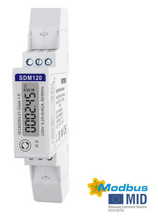I have read, with interest, some previous posts on this subject. This prompts me to ask if anyone could give me a brief description of how these units work? Does the current being drawn have to go through the unit or does it sense the quantity indirectly (maybe strength of field generated)? In either case how would the unit be wired into a standard consumer box. It would be interesting to see what the recorded value is compared to the supplier's main meter!
Although my interest is focused on measuring the power consumed through a consumer box in my barn. This controls power to workshop tools, floods, and external camper vans.
Any information would be appreciated.
regards. Chas
Although my interest is focused on measuring the power consumed through a consumer box in my barn. This controls power to workshop tools, floods, and external camper vans.
Any information would be appreciated.
regards. Chas






